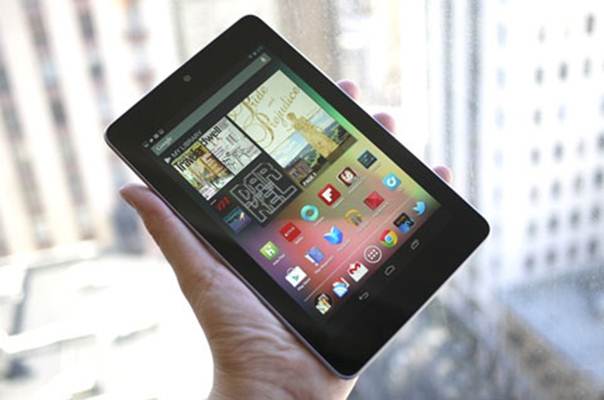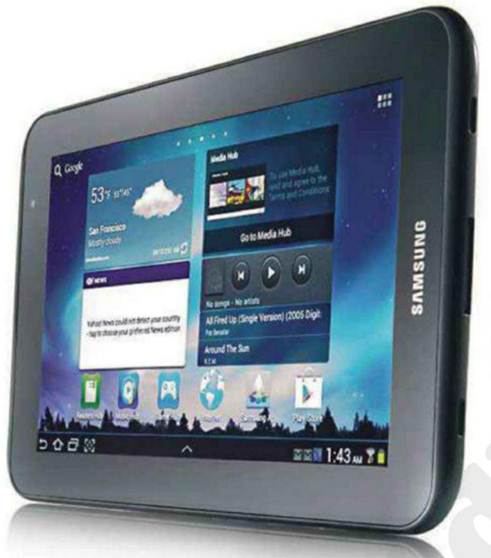The Android Landscap is changing fast, and
not just because Samsung is due to be out of pocket to the tune of a billion
dollars. The release of Android 4.1, code-named jelly Bean, gives everyone a
good reason to re-appraise the Android devices that are currently on the market
and ask which, if any, are worth investing in. in this guide, we’ll look at a
selection of mid-sized slates and full-size tablets in the hope that we can
help you find the right Android device at the right price, whatever your
criteria
When choosing an Android smartphone or
tablet, it’s important to pay attention to the operating system it’s running.
The market currently supports multiple versions of Android, and knowing which
you’re getting is just as important as knowing the technical capabilities of a
device
The oldest, which you’ll still find
available on a number of devices (mostly smartphones) is code-named Gingerbread
(Android 2.3x). Honeycomb (Android 3.x) was the first ‘tablet’ version of
Android, and Ice Cream Sandwich (Android 4.0) was the first universal version,
designed to run on both tablets and smartphones without any modifications.
Today, the newest devices run Jelly Bean (Android 4.1) and if you’re spending a
lot of money on a tablet or smartphone that isn’t running this version, it’s
worth checking to see if an upgrade is due any time soon.
That said, older operating systems go hand
in hand with cheaper components, and the older software often performs better
on them, so you may find that saving money on older devices is actually a
better fit for your needs. It’s possible to change the version of Android
running on certain devices, but note that doing so without an authorized update
from the manufacturers has the potential to void your warranty.
Unlike most operating systems, Android is
often heavily customized by retailers and manufactures before you buy a device,
and for this reason, installing an OEM (i.e. unmodified) version may cause
certain features and capabilities to disappear. For that reason, unless it’s
specifically stated, you should assume an Android device is locked to its
current OS.
Google Nexus 7

If anything has a chance of cracking
Apple’s dominance of the tablet market, it’s this. The Google Nexus 7 is cheap,
bang up to date and has the backing of one of the most popular and trusted tech
brands of all time. If you don’t already want one, there’s a good chance you
will soon.
The internals are impressive, with a
quad-core Tegra 3 processor, 1GB of RAM, a high-resolution 1280 x 800 7”
screen, and Jellybean as the operating system. It’s lightweight and fast, and
despite a low price, you won’t find many corners cut in the design. The screen,
for example, is an IPS panel, offering huge viewing angles and fantastic color
reproduction. Only the low storage capacity on the cheapest model (8GB) hints
at any cost-saving cutbacks.
There are some omissions: you don’t, for
example, get a micro-Sd slot or rear-facing camera as with most Android
versions, but these are easy to live without. What you do get is Google’s own
Siri-style voice search app, a micro-USB port, headphone jack and a four-pin
expansion socket. The 1.2 megapixel camera allows for face-unlock and video
chat, but oddly, you have to download a camera app to use it.
Because the Nexus 7 comes direct from
Google, it’s refreshingly free of modifications and bloat. The Android
experience is sleek and unencumbered, with nothing between you and the system.
The only pre-loaded apps, besides the Android defaults, are Google’s own:
YouTube, Gmail, Google maps and their kin. All quite useful, in the grand
scheme of things. The best change for Android 4.1 is the inclusion of Chrome, rather
than the generic Android browser, which now offers more desktop-like features,
and can sync with your PC version for a seamless browsing experience.
We don’t want to give the impression that
the Nexus 7 is perfect, but what flaws exist are the result of missing hardware
more than poor engineering. No rear-camera means you can’t use augmented
reality apps or scan QR codes, and the cloud isn’t quite good enough to excuse
the lack of an SD card slot given the low storage, but in every other way, it’s
brilliant. And doubly so, given the price.
Certainly the best 7” tablet around, and
the closest Android has to an iPad-killer
|
Details
|
|
Device class:
|
Slate
|
|
Price:
|
$258.99 (8GB)/ $323.9 (16GB)
|
|
Android version:
|
Jelly Bean
|
|
Release date:
|
July 2012
|
|
Features
|
9
|
|
Value
|
10
|
|
Overall
|
9
|
|
|
|
Samsung Galaxy tab 2 7.0

“This really needs Jelly Beans to stay
competitive and it’s barely three months old”
It might not have the coolest name around,
but the Samsung Galaxy Tab 2 7.0 is perhaps the only device around at the
moment that can five the Nexus 7 any real comperition – especially since the
Kindle Fire hasn’t yet made it to the UK. All three are part of the same class
of ultra-cheap mid-power tablets, but in a world where the Nexus 7 exists,
competing devices look increasingly unconvincing, and that’s true here.
For example, the tech in the Galaxy Tab 2
7.0 is nothing special. It’s powered by a 1GHz dual-core CPU with 1GB of RAM,
contains 8GB of storage, a 3MP rear-facing camera, a micro-SD port, and rather
low resolution 1024 x 600 7” screen. The corners have been cut so visibly it
might as well be triangular, and although it means the tablet has a solid
sub-$323.9 price, it compares poorly to the Nexus 7 in every aspect.
Samsung’s Android customization is minimal
and unobtrusive, and what additions exist are mostly worth keeping, but the
likelihood of a Jelly Bean update seems low at this point, with no
announcements made and only the poor form of Samsung’s previous after-market
behaviors to base speculation on. It’s a shame, because this really needs Jelly
bean to stay competitive, and it’s barely three months old, so it should be
able to handle it.
For the two months after its initial
release, there was every reason to buy a Samsung Galaxy Tab 2 7.0, but the fact
is that the Nexus 7 has completely dethroned it. It’s more powerful, cheaper,
easier to use and has better hardware. If you can think of a reason to get a
Galaxy Tab 2 instead of a Nexus 7, we’d love to hear it, and no doubt, so would
Samsung’s marketing department, because they’re probably just as stumped as
everyone else.
Taken as a device in isolation, it’s not
actually a bad entry into the tablet world. Low priced, reasonably powered, and
easy to use, but sadly for it, new tablets are anything but isolated in the
current market, and that means it’ll never be anything other than second best.
The Nexus 7 trounces it but, to be fair,
you could do worse.
|
Details
|
|
Device class:
|
Slate
|
|
Price:
|
$323.5 (8GB)
|
|
Android version:
|
Ice Cream Sandwich
|
|
Release date:
|
May 2012
|
|
Features
|
8
|
|
Value
|
7
|
|
Overall
|
7
|